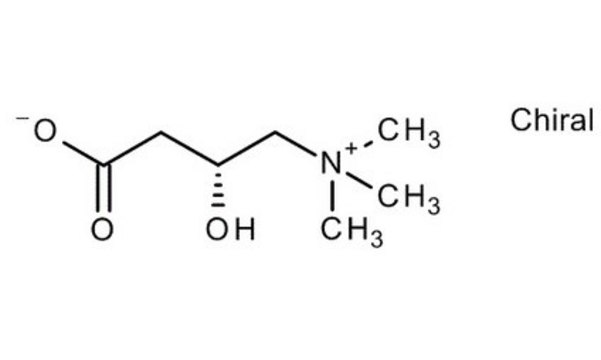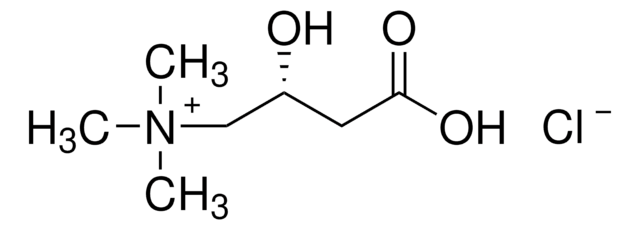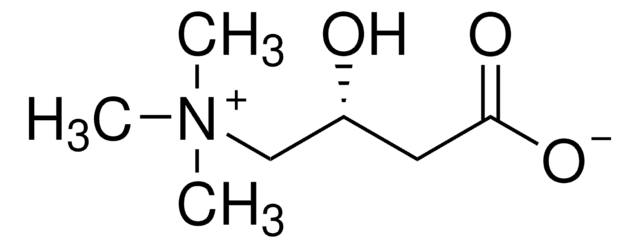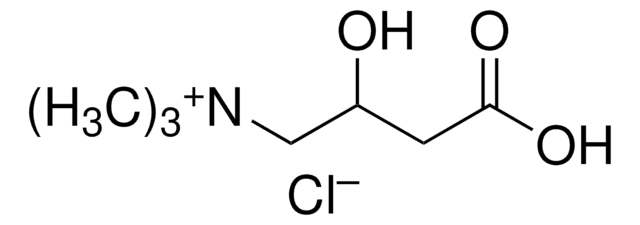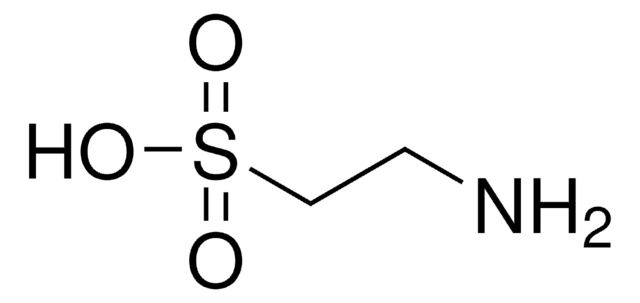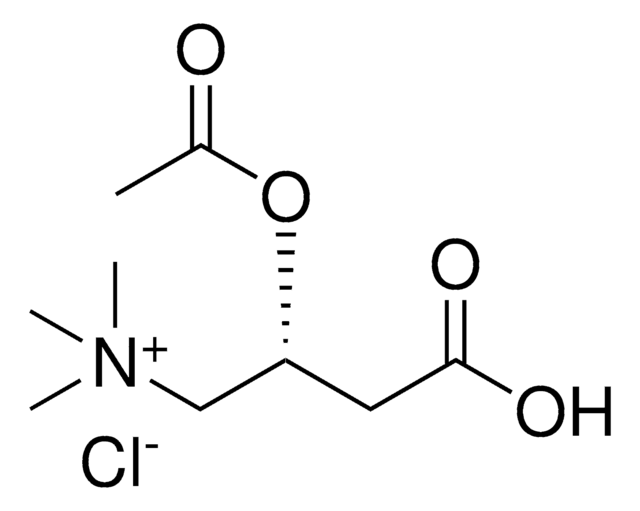11242008001
Roche
L-Carnitine
sufficient for ~3 x 10 tests
Synonym(s):
L-carnitine
Sign Into View Organizational & Contract Pricing
All Photos(1)
About This Item
UNSPSC Code:
12352200
Recommended Products
usage
sufficient for ~3 x 10 determinations (test-combination)
sufficient for ~3 x 10 tests
manufacturer/tradename
Roche
storage temp.
2-8°C
General description
Enzymatic UV-Test with a linearity in the range of 5.6 - 112 μM L-carnitine in the test solution.
Application
Determination of L-carnitine in seminal plasma, serum, or urine in life science research applications.
Biochem/physiol Actions
L-carnitine is an abundant amino acid present in red meat. Its trimethylamine structure has similarity to that of choline. The major source of this amino acid is by dietary ingestion. In mammals, it is also endogenously produced from lysine. It participates in the transport of fatty acids into the mitochondrial compartment. It produces trimethylamine-N-oxide (TMAO) and promotes atherosclerosis.
Packaging
1 kit containing 6 components
Principle
L-Carnitine is acetylated to acetyl carnitine by acetyl coenzyme A (acetyl CoA) in the presence of the enzyme carnitine acetyl transferase (CAT). The resulting coenzyme A (CoA) is acetylated back to acetyl CoA in the presence of adenosine-5′-triphosphate (ATP) and acetate, catalyzed by the enzyme acetyl CoA synthetase (ACS). This results in the formation of adenosine-5′-monophosphate (AMP) and inorganic pyrophosphate (PPi). In the presence of ATP, supported by myokinase (MK), AMP forms twice the amount of adenosine-5′-diphosphate (ADP). This is converted in the following reaction with phosphoenol pyruvate (PEP) in the presence of pyruvate kinase (PK). The pyruvate formed is reduced to L-lactate by reduced nicotinamide adenine dinucleotide (NADH) in the presence of lactate dehydrogenase (LDH). The amount of NADH consumed during the reaction is equivalent to half the amount of L-carnitine. NADH is measured spectroscopically at 340 nm.
Preparation Note
Storage conditions (working solution): Note:
- After reconstitution, the solution 1 is stable for 4 days at 2 to 8 °C.
- Bring solution 1 to 15 to 25 °C prior to use.
- After reconstitution, the suspension 2 is stable for 3 months at 2 to 8 °C.
Other Notes
For life science research only. Not for use in diagnostic procedures.
Kit Components Only
Product No.
Description
- Coenzyme/Buffer Mixture
- Enzyme Component A: Acetyl-CoA synthetase
- Enzyme blend B: Enzyme suspension with myokinase, lactate dehydrogenase, and pyruvate kinase
- Carnitine acetyltransferase
- L-Carnitine Standard Solution
- Detergent Solution
Signal Word
Danger
Hazard Statements
Precautionary Statements
Hazard Classifications
Aquatic Chronic 3 - Eye Dam. 1
Storage Class Code
12 - Non Combustible Liquids
WGK
WGK 2
Flash Point(F)
does not flash
Flash Point(C)
does not flash
Regulatory Information
新产品
Choose from one of the most recent versions:
Already Own This Product?
Find documentation for the products that you have recently purchased in the Document Library.
The Correlation between Plasma L-carnitine and Growth Performance in Suckling Pigs in Respect of mRNA Expression of a Carnitine Transporter, OCTN2, in Lactating Porcine Mammary Tissues.
Thongsong B and Thongsong SK
Thai Journal of Veterinary Medicine, 38, 27-36 (2008)
Ke Li et al.
Journal of chromatographic science, 48(5), 371-374 (2010-06-03)
A simple and reliable high-performance liquid chromatographic (HPLC) method for simultaneous determination of free and total carnitine in human serum has been developed, and its clinical significance has been investigated. After proteins in serum were precipitated, carnitine in serum was
Intestinal microbiota metabolism of L-carnitine, a nutrient in red meat, promotes atherosclerosis.
Koeth RA, et al.
Nature Medicine, 19, 576-585 (2013)
Our team of scientists has experience in all areas of research including Life Science, Material Science, Chemical Synthesis, Chromatography, Analytical and many others.
Contact Technical Service